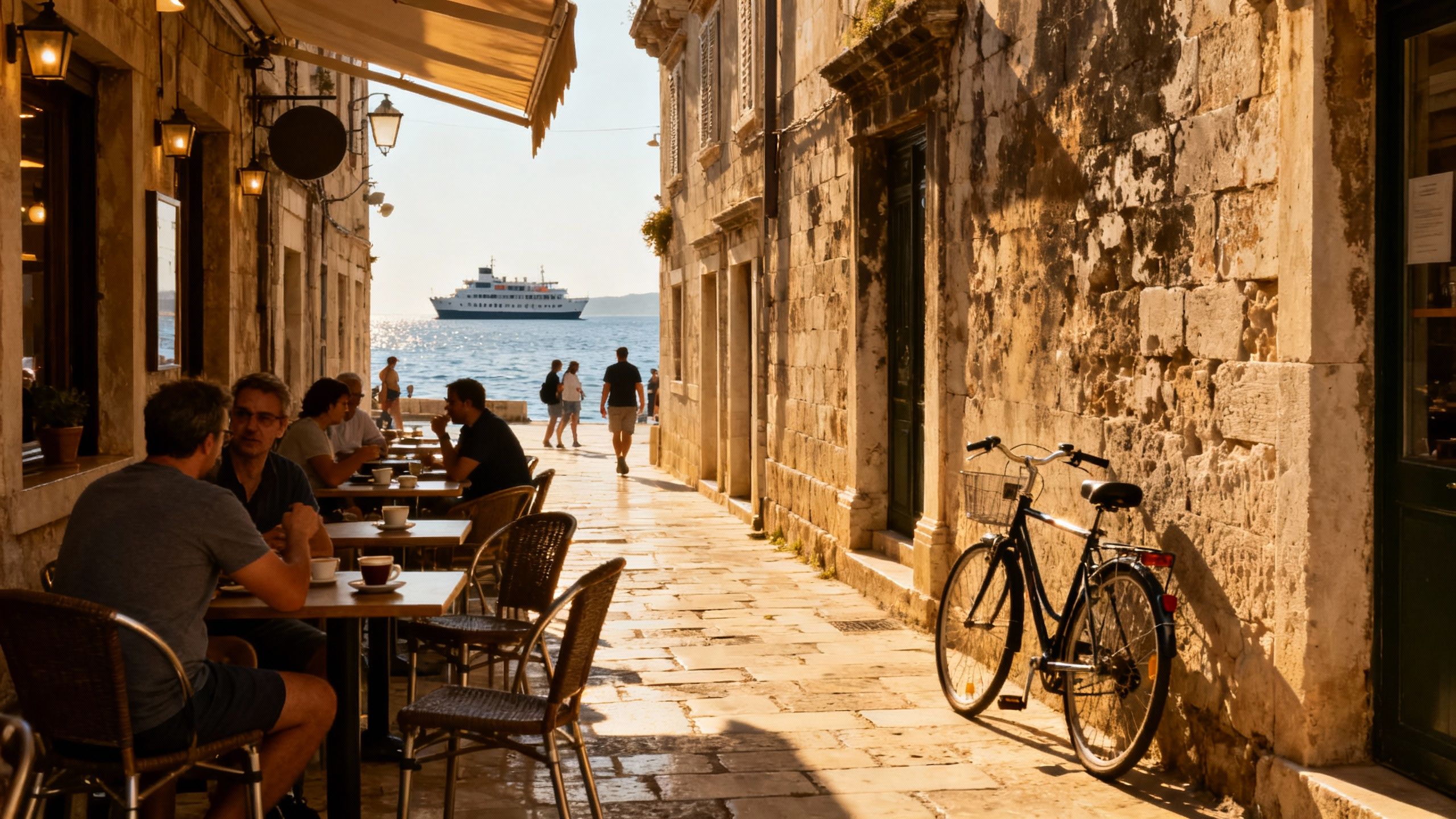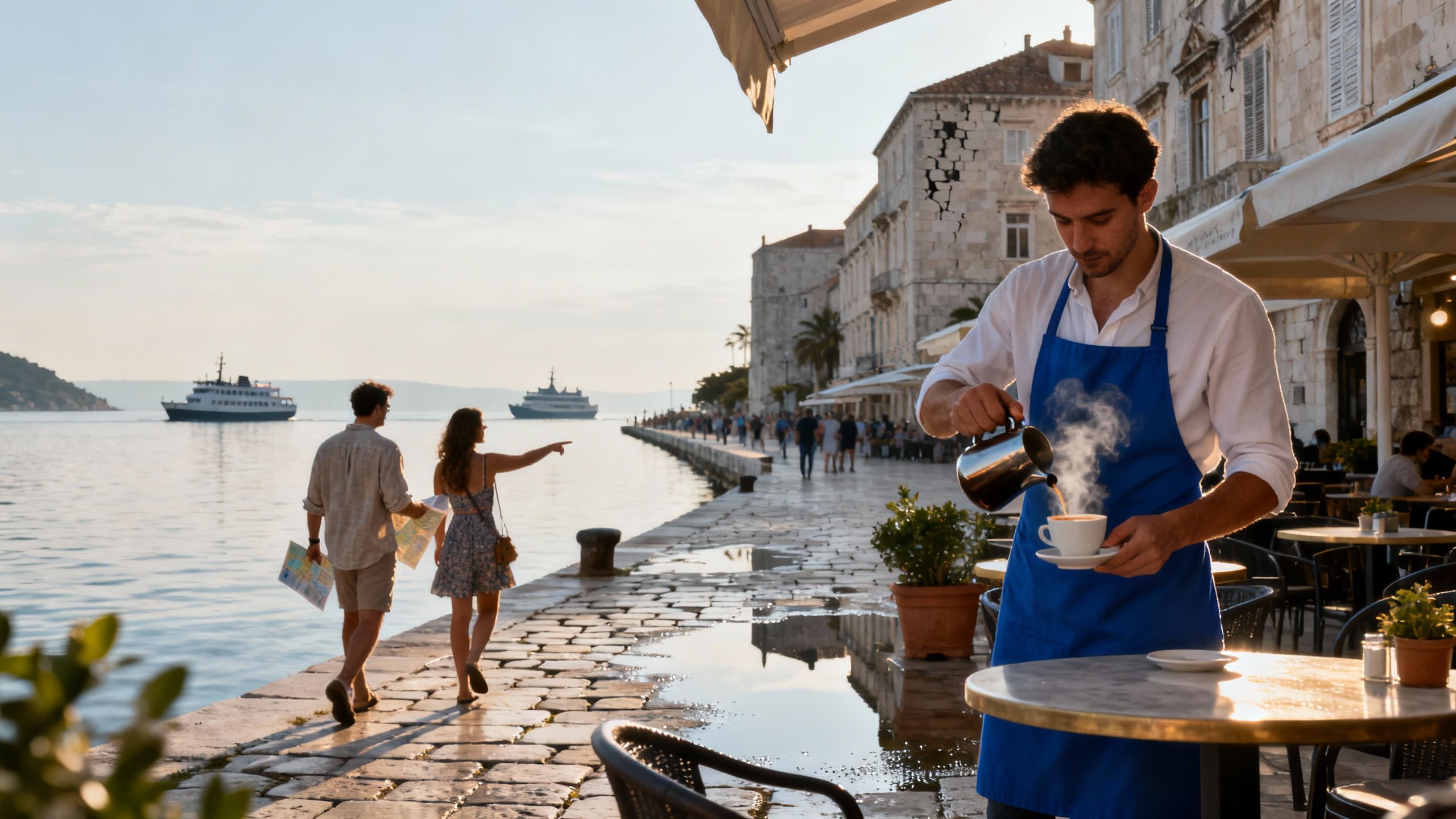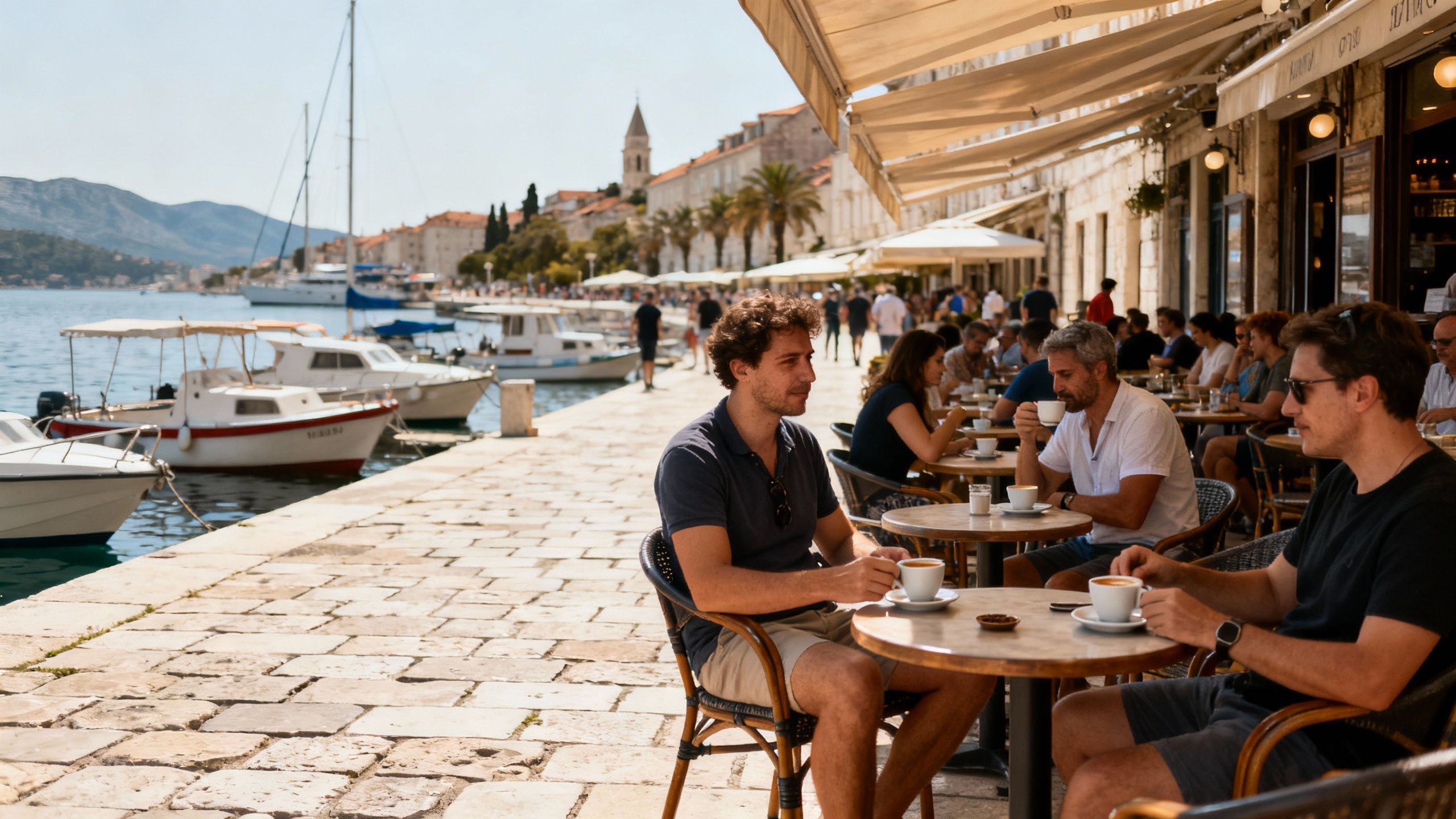Where Croatia’s 'Overpriced Coast' Hides Real Value
Croatia’s coast is romantic — and transparent if you know where to look. Learn the registry checks, ministerial consent rules and neighbourhood signals that protect your lifestyle and investment.
Imagine sitting at a marble table in Split’s Varoš quarter, espresso steaming, while fishermen haul octopus from the harbour and a neighbour chats about property taxes. Croatia smells of pine, sea salt and fresh market citrus; life moves with long lunches, late swims and seasonal intensity. That atmosphere draws buyers — but it also hides routine market frictions: uneven disclosure in small towns, ministry consent rules for non‑EU buyers, and local quirks that change value overnight. This piece pairs that lived-in sense of place with the documents, data and local pathways you need to see a realistic picture before you fall in love.
Living Croatian Life — the day-to-day that shapes value
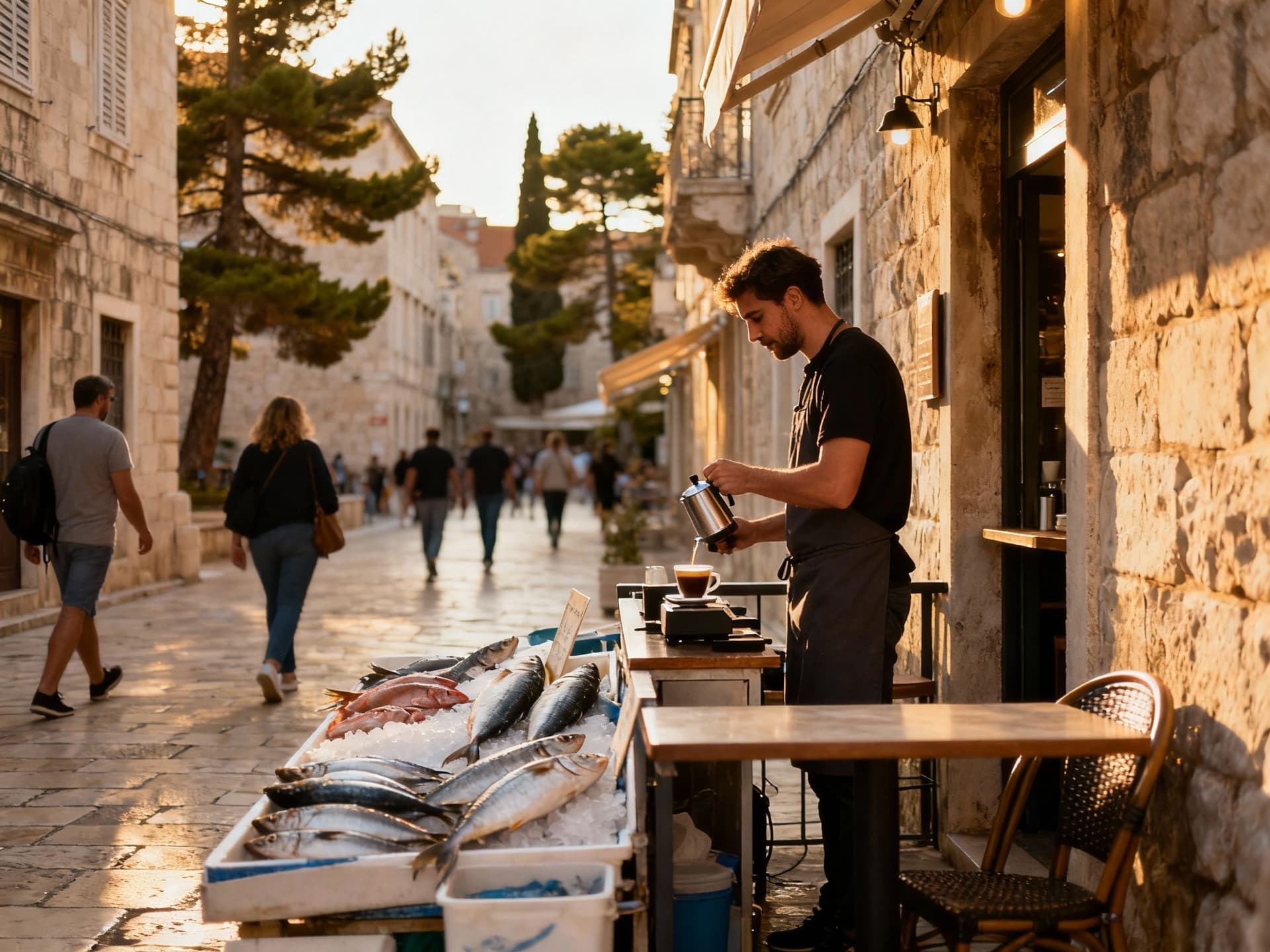
Croatia’s daily rhythm varies by shore, town and island. In Rijeka and Zagreb mornings mean cafés and commutes; along the Adriatic (Split, Hvar, Zadar) mornings open to魚 markets, cafés spilling on stone streets and afternoons that empty into beaches. These patterns matter because they determine rental seasonality, property maintenance cycles and the neighbourhoods where homes are lived in year-round versus used as holiday lets. Think beyond the postcard: ask how neighbourhood life flows across seasons before pricing a property purely by square metres.
Spotlight — Varoš, Split and the compact neighbourhood economy
Varoš (Split) is shorthand for how neighbourhood textures create value. Narrow lanes, terrace cafés (try Konoba Fetivi’s terrace off Ulica kralja Zvonimira), and a mix of permanent residents and short-term visitors mean small flats can command steady demand in winter and strong premiums in summer. For buyers this split implies two realities: renovation standards must meet local expectations for year-round comfort, and rental potential is highly seasonal — the right agent knows which streets deliver winter repeat renters and which are pure summer cash flows.
Food, markets and neighbourhood life — where community meets commerce
Markets shape more than menus. Dolac in Zagreb or the fish market by Split’s Riva are daily social hubs where neighbours meet and where buyers learn the unadvertised realities of a street. If a bakery opens on your street, expect footfall to rise; if a municipal building is planned, expect short-term disruption. These micro-shifts alter rental demand and resale sentiment. Walk markets, ask stallholders about seasons, and watch who buys groceries locally — those are clues to long-term neighbourhood resilience.
Making the move: market transparency and practical realities
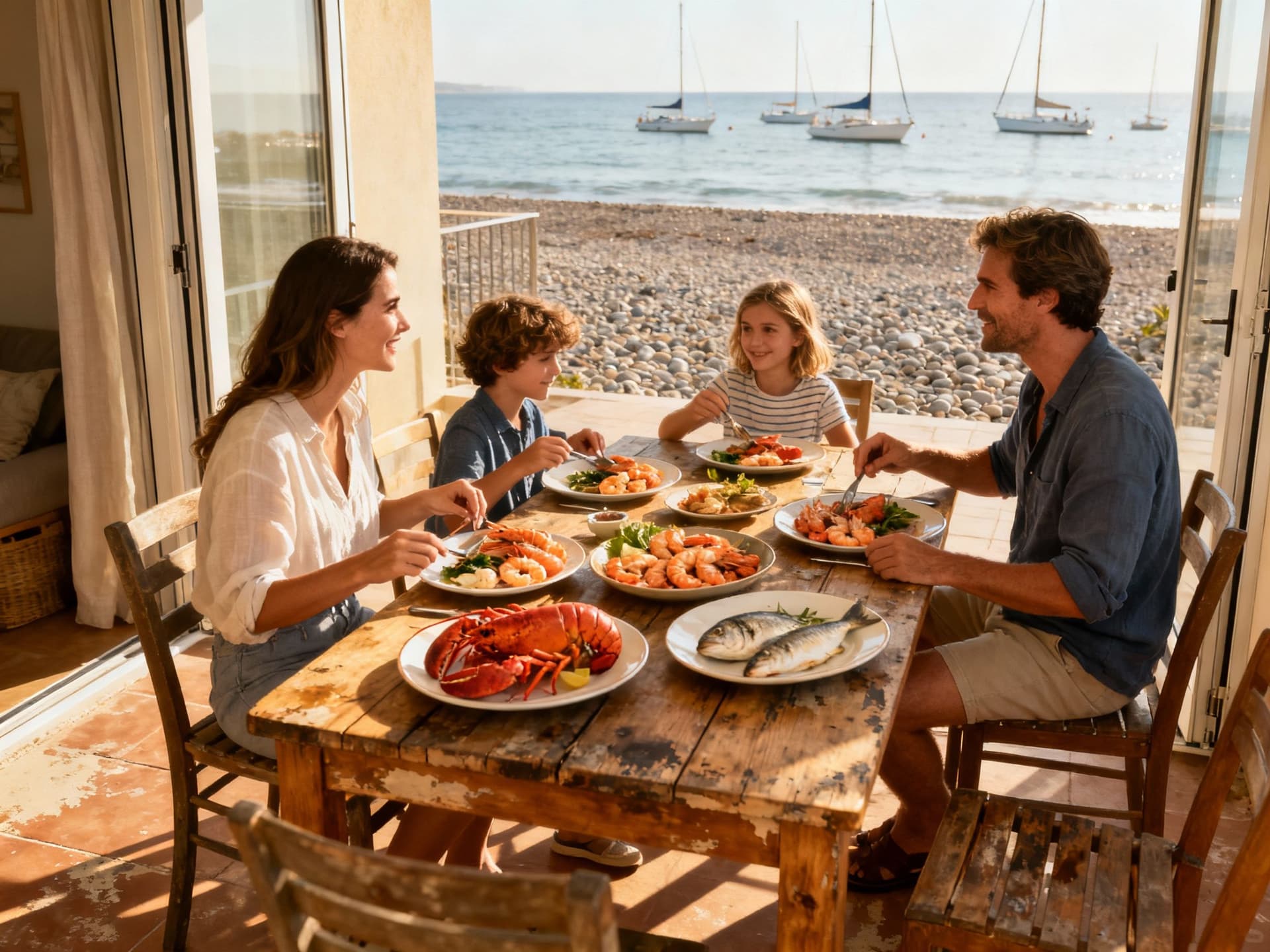
Lifestyle is the lure; transparency is the guardrail. Croatia publishes authoritative house price indices showing rapid growth along the Adriatic and in other regions (DZS reports annual increases in the double digits in recent quarters). Yet local disclosure practices vary: land register extracts can be obtained online for information only, while official court-issued extracts are required for registration. For non‑EU buyers, ministerial consent and reciprocity rules are critical practical hurdles — skip those checks at your peril.
Property styles and what they really mean for daily life
Stone town apartments, modern coastal developments and inland villas each demand a different day-to-day commitment. A renovated stone flat in Hvar’s old town gives immediate character but limited parking and higher maintenance. A new apartment block near Split’s Bay offers modern systems and easier management but less architectural charm. Match type to lifestyle: if you want community cafés and walking access, accept smaller interiors; if you prize space and parking, choose peri-urban developments and plan for weekday drives.
How local experts protect both lifestyle and ledger
- 1) Verify the land register extract at the competent municipal court rather than relying on an informal online copy; 2) Insist on an OIB (Croatian tax number) check for sellers and copies of building permits; 3) For non‑EU citizens confirm reciprocity and ministerial consent timeline before contract signing; 4) Ask an agent to map neighbourhood seasonality — which streets live year‑round and which empty outside July‑August. Each step preserves both your lifestyle expectation and the legal title.
Insider knowledge: red flags, hidden costs and cultural realities
Expats often miss the small rules that shift cost profiles: shared building maintenance funds (zajednički troškovi) left unpaid by neighbours, informal partitions carved into historic flats, or municipal plans to re-zone coastal strips. These are not dramatic headline risks, but they erode returns and daily comfort. The good news: they are discoverable with on-the-ground diligence, a lawyer who reads municipal plans and an agent prepared to walk the street with you and ask awkward questions.
Cultural cues that affect where you’ll fit in
Croatians value local friendship networks, long family lunches and quiet public order. Learn a handful of Croatian phrases, show up at market stalls and join a seasonal event (festa, grape harvest fairs) and you’ll see neighbourhood doors open. That social currency reduces friction when arranging local services, builders or short-term rentals. Put another way: cultural integration is not optional for buyers who want the best local terms, it materially changes what costs and conveniences you can expect.
- Practical red flags to spot on a viewing
• Missing court-issued land register extract; • Evidence of unpermitted works or no building permit on file; • No OIB or unclear payment trail for deposit; • Seller unable to prove exemption from pre-emption rules; • Agents or sellers pushing off-market verbal deals without written conditions.
If you love Croatia for mornings on a cafe terrace and late swims, you can preserve that life and still act like a professional investor. Start with published data (DZS house price indices show the Adriatic rose faster than Zagreb in recent years), insist on court-issued land register extracts, confirm ministerial consent where required and hire a bilingual lawyer who will translate municipal plans and check encumbrances. A local agent should be your lifestyle scout and your practical partner — not just a salesperson.
Conclusion: Croatia’s appeal is genuine and measurable, but so are its local procedures and seasonal economics. Read the indices, walk the markets, verify the land books and treat cultural fit as part of your due diligence. When you combine sensory knowledge of life in a place with legal and registry transparency, you buy both a home and the right to live in it without surprises.
Dutch relocation advisor who moved to Marbella in 2016. Guides Dutch buyers through visa paths, relocation logistics, and balance of lifestyle with value.
